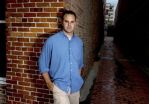(Press-News.org) MANHATTAN, KAN. -- People who believe that fate and chance control their lives are more likely to be superstitious -- but when faced with death they are likely to abandon superstition altogether, according to a recent Kansas State University undergraduate research project.
The project, led by Scott Fluke, a May 2010 K-State bachelor's graduate in psychology, Olathe, focuses on personality traits that lead to superstition. Fluke received a $500 Doreen Shanteau Undergraduate Research Fellowship in 2009 to work with the team of Russell Webster, graduate student in psychology, Shorewood, Ill., and Donald Saucier, K-State associate professor of psychology.
For the project, "Re-Examining the Form and Function of Superstition," the team defined superstition as the belief in a casual relationship between an action, object, or ritual and an unrelated outcome. Such superstitious behavior can include actions like wearing a lucky jersey or using good luck charms.
After performing two studies, the researchers developed three reasons for superstitious behavior: individuals use superstitions to gain control over uncertainty; to decrease feelings of helplessness; and because it is easier to rely on superstition instead of coping strategies.
"People sometimes fall back on their superstitions as a handicap," Saucier said. "It's a parachute they think will help them out."
In the first study, the researchers conducted questionnaires with 200 undergraduates, asking about how pessimistic they were, whether they believed in chance or fate, if they liked to be in control and other questions. One of the major discoveries was that people who believe that chance and fate control their lives are more likely to be superstitious.
In the second study the researchers wanted to know how participants reacted to death, and asked them to write about how they felt about their own death. The team was surprised to find that participants' levels of superstition went down when they thought about their own death, which the researchers attributed to death being a situation of extreme uncertainty.
"We theorized that when people thought about death, they would behave more superstitiously in an effort to gain a sense of control over it," Fluke said. "What we didn't expect was that thinking about death would make people feel helpless -- like they cannot control it -- and that this would actually reduce their superstitious belief."
Fluke got the idea for his research in an undergraduate methods research course his first semester at K-State, when he realized there were many unanswered questions about psychology and superstition. He decided to pursue the topic further as a research project.
"I was interested in superstition because it frustrates me when people do things that don't make sense," Fluke said. "It boggled me that people would use a good luck charm to do well on a test rather than studying for it. We wanted to know why people would go about almost actively hurting themselves."
The research is part of Saucier's overall research program, and the team is now preparing results of their study for publication.
Saucier offers some tips to avoid superstitious behavior:
Don't believe in bad luck and take some ownership over what control you do have in situations. Sometimes we use bad luck to let ourselves off the hook, Saucier said, but we should instead focus on what we can do to avoid difficult situations in the first place.
Be decisive and proactive. People who are less decisive believe in superstition more, Saucier said, and those who are proactive are less superstitious.
Don't be in a situation where you have to rely on bad luck. Bad luck would never occur if only good things happened. If something bad happens and you call it bad luck, do it as a coping mechanism after the fact rather than before the event, Saucier said.
INFORMATION: END
Sugar, salt, alcohol and a little serendipity led a Northwestern University research team to discover a new class of nanostructures that could be used for gas storage and food and medical technologies. And the compounds are edible.
The porous crystals are the first known all-natural metal-organic frameworks (MOFs) that are simple to make. Most other MOFs are made from petroleum-based ingredients, but the Northwestern MOFs you can pop into your mouth and eat, and the researchers have.
"They taste kind of bitter, like a Saltine cracker, starchy and bland," said Ronald ...
The academic performance of adolescents will suffer in at least one of four key subjects –– English, math, science, history –– if their DNA contains one or more of three specific dopamine gene variations, according to a study led by renowned biosocial criminologist Kevin M. Beaver of The Florida State University.
The research sheds new light on the genetic components of academic performance during middle and high school, and on the interplay of specific genes and environmental factors such as peer behavior or school conditions.
"We believe that dopaminergic genes ...
New Rochelle, NY, September 1, 2010—Biopharmaceutical firms and other life science organizations are taking definitive steps toward creating greener working environments and developing more sustainable operations, reports Genetic Engineering & Biotechnology News (GEN). This promising trend was made clear through a series of presentations and panel discussions that took place at GEN's (www.genengnews.com/gen-articles/biopharma-s-going-green/3381), "GreenBioPharma" conference, which was recently held in Philadelphia.
"The main message that emerged from our meeting was that ...
The Association for Research in Vision and Ophthalmology (ARVO), a professional organization of member scientists, opposes the Federal District Court injunction that froze federal funding for human embryonic stem cell (hESC) research. ARVO is troubled by this barrier to research that has the potential to restore sight and mitigate eye damage.
ARVO members investigate hESC therapies for treating diseases such as age-related macular degeneration (AMD), diabetic retinopathy, glaucoma and corneal disease, along with studies related to eye tissue transplantation, regeneration ...
LA JOLLA, CA – September 2, 2010 – Scripps Research Institute scientists have identified two proteins with potential to be important targets for research into a wide range of health problems, including pain, deafness, and cardiac and kidney dysfunction.
The study was published in Science Express, the advanced, online edition of the journal Science, on September 2, 2010.
In the study, the Scripps Research scientists identify two proteins, which they named Piezo1 and Piezo2 from the Greek meaning "pressure," involved in the cellular response to mechanical stimulation. ...
Studies have shown that heat-stressed dairy cows suffer from damage to their ovarian follicles. Moreover, the eggs produced by the damaged follicles may also be damaged, said Dr. Todd Bilby, Texas AgriLife Extension Service dairy specialist.
Worse, after becoming heat-stressed, other studies have shown the eggs she ovulates for the next 40 or 50 days are likely to be damaged as well, according to Bilby.
Bilby and his graduate student, Brandi Stewart, have found a way to double pregnancy rates during the summer and increase the number of heifers born as compared with ...
PASADENA, Calif.—Researchers at the California Institute of Technology (Caltech) have devised a new technique—using a sheet of carbon just one atom thick—to visualize the structure of molecules. The technique, which was used to obtain the first direct images of how water coats surfaces at room temperature, can also be used to image a potentially unlimited number of other molecules, including antibodies and other biomolecules.
A paper describing the method and the studies of water layers appears in the September 3 issue of the journal Science.
"Almost all surfaces have ...
New Orleans, LA – In a first person paper published in the August 27, 2010 issue of Childhood Obesity, Dr. Melinda Sothern, Director of Health Promotion and Professor of Public Health at LSU Health Sciences Center New Orleans, provides three ways to de-program the 1950s obesity trinity underlying the current obesity epidemic in the United States and protect future generations from its health consequences.
"The combination of prenatal tobacco use, infant formula, and frequent pregnancies—
i.e., the obesity trinity—synergistically created the first generation of nutritionally ...
UCSF researchers today unveiled a prototype model of the first implantable artificial kidney, in a development that one day could eliminate the need for dialysis.
The device, which would include thousands of microscopic filters as well as a bioreactor to mimic the metabolic and water-balancing roles of a real kidney, is being developed in a collaborative effort by engineers, biologists and physicians nationwide, led by Shuvo Roy, PhD, in the UCSF Department of Bioengineering and Therapeutic Sciences.
The treatment has been proven to work for the sickest patients using ...
Hurricane Earl is still a powerful category four hurricane on the Saffir-Simpson Scale as it approaches the North Carolina coast today. NASA's Tropical Rainfall Measuring Mission (TRMM) satellite observed the high rates rain was falling within Earl, in some areas more than 2 inches per hour. Today, the Global Hawk unmanned aircraft is also flying into the eye of Hurricane Earl at altitudes of 60,000 feet to gather information about the storm.
Hurricane Earl became the most powerful hurricane of the 2010 Atlantic season early on September 2 when its sustained winds reached ...



